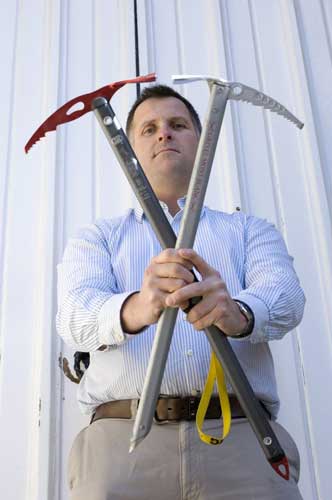First person: 'I survived the world's longest climb'
Dominic Faulkner, 41

Your support helps us to tell the story
From reproductive rights to climate change to Big Tech, The Independent is on the ground when the story is developing. Whether it's investigating the financials of Elon Musk's pro-Trump PAC or producing our latest documentary, 'The A Word', which shines a light on the American women fighting for reproductive rights, we know how important it is to parse out the facts from the messaging.
At such a critical moment in US history, we need reporters on the ground. Your donation allows us to keep sending journalists to speak to both sides of the story.
The Independent is trusted by Americans across the entire political spectrum. And unlike many other quality news outlets, we choose not to lock Americans out of our reporting and analysis with paywalls. We believe quality journalism should be available to everyone, paid for by those who can afford it.
Your support makes all the difference.I first attempted to climb Everest when I was in the SAS in 2000 and had a pretty disastrous time. My eye haemorrhaged and that was the end of my expedition. Over the next year or so, my sight recovered and I did my best to leave Everest behind me. But I couldn't quite put it to bed. The mountain was calling me. I decided that if I went back, I wanted to do something that was bigger and better.
After a lot of research I was amazed to find that no one had ever attempted the longest climb – an 8,000km cycle from the lowest point on Earth, the Dead Sea, before ascending Everest, the highest point on Earth. I couldn't believe my luck that such a fantastic challenge was still available.
I contacted all my old climbing friends to take part but most were married with children and in careers and thought it too much of a risk. Eventually I pulled together a team of five cyclists and eight climbers for the project and we set off with much trepidation in early 2005.
Our cycle route took us through Jordon, Syria, Turkey, Iran, Pakistan, India and Nepal, before ending at the foot of Everest. It was a truly gruelling punishment: at times we were covering several hundred kilometres every day. In Turkey we had to deal with the worst winter in 30 years, while in Syria we were shadowed by the secret police. After crossing Iran and Pakistan, we entered India and then Nepal for the last 10 days. Those 10 days to the Everest base were easily the toughest part of the cycle. The poor roads, dust and headwinds, and the climb to base camp at 5,360m made it a truly hellish experience.
The climb itself felt doomed from the start. News had come that David Sharp, a fellow English climber, had died on the mountain, so it felt like we were doing something reckless and selfish. Also, just before we set off, the wife of my late friend Jacques-Hugues Letrange, the French climber, asked me to remove the personal effects from his body which was 100m below the summit. This was the journey's pivotal moment; it gave us a renewed motivation and purpose.
The ascent was phenomenally physically challenging. A few hours in, we came across an unconscious Canadian climber and had to give him some of our oxygen to revive him. We were among so much carnage, we just had to shut ourselves off from it and be quite blind to anything except reaching the top.
Finally reaching the summit after five months and eight countries was highly emotional. There I was on the summit of Everest looking up into space, experiencing one of the happiest moments of my life with tears in my eyes. At the same time, it was tainted by knowing I had to do something that is about as desperate as it gets: recovering the wedding ring from my friend's body. It was a brutal reminder not to let things go to your head.
'The Longest Climb' by Dominic Faulkner is published by Virgin Books, £18.99
Join our commenting forum
Join thought-provoking conversations, follow other Independent readers and see their replies
Comments